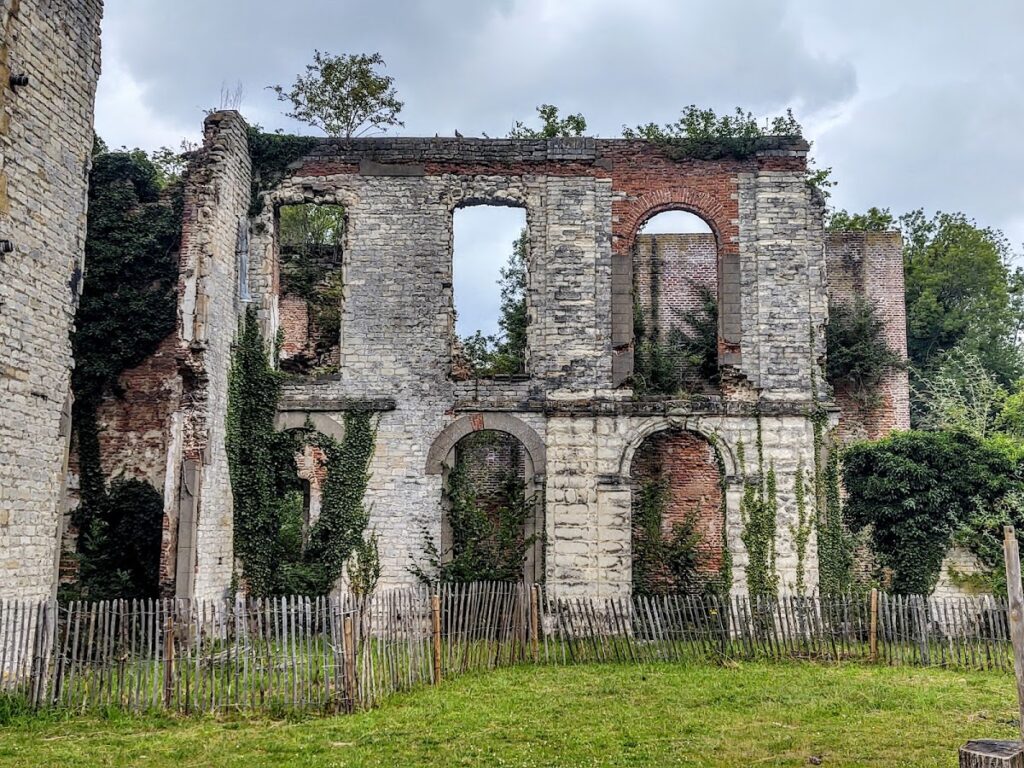Prinsenkasteel: A Historic Castle Ruin in Grimbergen, Belgium
Visitor Information
Google Rating: 4.1
Popularity: Low
Google Maps: View on Google Maps
Official Website: www.mot.be
Country: Belgium
Civilization: Unclassified
Remains: Military
History
Prinsenkasteel is located in the municipality of Grimbergen, Belgium. It was originally established by the local rulers of Grimbergen in the early 14th century, following the destruction of the earlier family stronghold owned by the Berthout family during the Grimbergen Wars of the 12th century. The initial acquisition of the castle’s site may have involved a land exchange with the Norbertine abbey, documented in 1217.
The medieval fortress, originally named Boksem, suffered major damage during the late 15th century when Maximilian I, regent of the Burgundian Netherlands, and Albert III, Duke of Saxony led sieges in 1488 and 1489. Contemporary records describe the fortress as being destroyed, but parts of the original keep and a round tower in the northwest corner survived these attacks. Around 1500, a new castle was built on the existing foundations, giving rise to the structure that would evolve into Prinsenkasteel.
In 1686, Philippe-François de Glymes, Count of Grimbergen, was granted the title of prince by King Charles II of Spain. This elevation changed the status of the estate to a princely residence and was the occasion for the castle to be renamed Prinsenkasteel, or “Prince’s Castle.” The structure went through damage during the War of the Austrian Succession in the mid-18th century but was restored by 1745. The castle underwent further decorative enhancements during the 1770s. Ownership passed through marriage to the House of Mérode in 1757, with Henri de Mérode becoming the first Mérode prince of Grimbergen.
Between 1901 and 1933, the castle served as a residence for about 25 Premonstratensian nuns who had been expelled from France. This period saw the castle become habitable once again, aided by restoration efforts led by architect Pierre Langerock in 1907. During the Second World War, the castle was occupied by German forces and used as a munitions depot. Retreating troops set fire to the building in September 1944 to prevent the Allied forces from capturing ammunition. This event caused extensive damage, leaving only the southwest keep and the northwest round tower standing.
The Mérode family retained ownership until 1959, when the property was sold to the municipality of Grimbergen. Since then, initiatives have focused on restoration and conservation, with the ruins integrated into plans related to the nearby Museum of Old Techniques (MOT). In 2023, the Flemish government allocated funding for conservation work due to begin in 2024, highlighting ongoing efforts to preserve the historic site.
Remains
Prinsenkasteel was originally constructed as a water castle, meaning it was surrounded by a moat designed to enhance its defenses. The castle featured a main keep or donjon as its central stronghold, along with at least one round corner tower situated in the northwest section. These two major structural elements survived both the late 15th-century sieges and the devastating fire of 1944, standing as prominent reminders of the castle’s long history.
Beneath the castle, the cellar of the water castle contains pillars adorned with the coats of arms belonging to the Van Bergen family, descendants of the Berthout lineage. These heraldic symbols link the site to its medieval roots and the families who once controlled the region. The use of such decorated pillars indicates a combination of both functional and symbolic architectural design.
The castle complex also included various service buildings such as stables and a carriage house, which together with an adjacent farm, form an annex known as the Guldendal. This annex was acquired by the Grimbergen municipality in 1978 and has been home to the Museum of Old Techniques since 1982. The Guldendal area retains monument status, complementing the protected ruins of the castle.
Today, the ruins of Prinsenkasteel lie within Prinsenbos Park in Grimbergen. This green space is bounded by several streets, including Prinsenstraat and De Merodestraat, and is managed by the Flemish Agency for Nature and Forestry. Although the ruins themselves are not open to public access, the surrounding park remains maintained as part of the historic estate. The castle ruins have enjoyed protected status as a historic monument since 1959, while the entire estate was designated a rural heritage site in 1980, preserving its archaeological and cultural significance for future generations.










